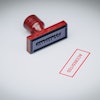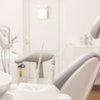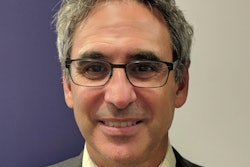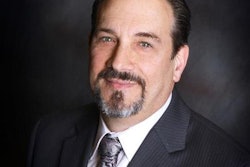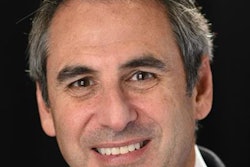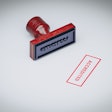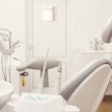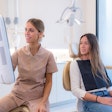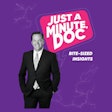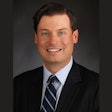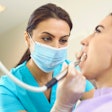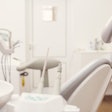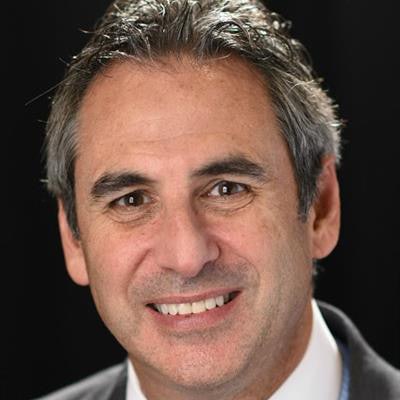
Part 1 of this series looked at how teledentistry can be used in the public health sector. But the full potential for teledentistry lies far beyond the public health sector. This road-tested technology will gain much more critical mass when it becomes widely adopted in private practice, for-profit dentistry.
 Marty Jablow, DMD.
Marty Jablow, DMD.When it comes to the adoption of teledentistry in the private sector, the future looks bright. In fact, the ADA has implemented two new teledentistry dental procedure codes (CDT) in 2018:
- Code D9995 teledentistry is for synchronous, real-time encounters. Reported in addition to other procedures (such as diagnostic procedures) delivered to the patient on the date of service.
- Code D9996 teledentistry is for asynchronous procedures, that is information is stored and forwarded to a dentist for subsequent review. This is also reported in addition to other procedures delivered to the patient on the date of service.
6 areas
In addition, here are a few early examples of where teledentistry may be headed.
1. Dentist-owned hygiene clinics
By taking the hub-and-spoke approach, a full-service dental office can be linked to hygiene clinics that the dentist owns and operates.
These hygiene clinics could be located on the periphery of the dental office's service area, but within reasonable driving distance. In this manner, the satellite hygiene clinic can consult with the dentist in the hub office to coordinate treatment or schedule an appointment with the dentist if necessary.
2. Specialist collaboration
“Teledentistry can be used as a catalyst for collaborative care and increased referrals.”
Teledentistry can be used as a catalyst for collaborative care and increased referrals. This may work best if specialists adopt the technology first, then invite general practitioner dentists to join their collaboration network. The specialists can increase their availability, boost responsiveness, and enhance communication between themselves and their most active referring dentists.
Some of the most likely specialists who would benefit from teledentistry-enabled referrals and collaboration include periodontists, endodontists, orthodontists, and oral surgeons.
3. DSO resource sharing
Dental service/support organizations (DSOs) and group practices often have specialists who work part time or rotate among offices. Teledentistry can enable any office to consult with the specialist no matter which location they are currently working in.
The technology can also enable a growing DSO or group practice to augment the specialist care it provides in a specific location until a specialist is hired to work in that office.
4. Emergency department
Many dentists are affiliated with a local hospital, yet their time onsite is limited. With the growing trend of uninsured patients turning to emergency rooms for urgent dental care, teledentistry can help emergency room staff triage these patients more effectively and refer them to affiliated dentists.
The standard procedure for emergency room oral care is pain medication, antibiotics, and release. Teledentistry could offer a vast improvement.
5. Education
While more and more colleges and universities operate satellite campuses, dental and hygiene schools lag far behind. Teledentistry may be able to provide a portion of the curriculum via satellite class rooms to make it more convenient for students working their way through school, who can't afford to live on campus, and so on. This could be especially useful when it comes to enabling the review of case preps and other work by clinical faculty regardless of location.
6. Dental lab collaboration
In yet another win-win scenario, dentists and dental lab operators can share cone-beam CT images, digital impression files, and patient photos in real-time to increase case accuracy and ultimately ensure patient satisfaction.
Real-time communication rather than the traditional information hand-off enhances collaboration and understanding -- especially when it comes to planning and completing complex restorative cases.
What's more, dental labs can take a page out of the teledentistry for specialist/general practitioner collaboration playbook. For example, a dental lab owner could use a teledentistry platform to build a network of dentists. This would not only be a market differentiator but may help offset the challenge of off-shore dental lab outsourcing.
Teledentistry technology has already proved itself to be efficient, affordable, and secure in a wide range of settings, and new applications are emerging all the time. For the growing population of professionals who have embraced teledentistry, time, distance, efficiency, and cost are no longer the barriers to care that they once were.
Martin Jablow, DMD, practices general dentistry in a group setting in Woodbridge, NJ. He lectures and writes articles on the use of technology to enhance the practice of dentistry and can be reached via email at [email protected].
The comments and observations expressed herein do not necessarily reflect the opinions of DrBicuspid.com, nor should they be construed as an endorsement or admonishment of any particular idea, vendor, or organization.

